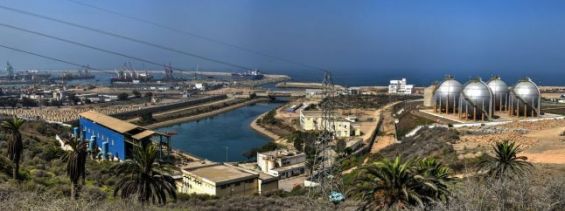Based on the findings of NASA satellites that tracked sulfur dioxide (SO2) emission hotspots around the world, non-governmental environmental organization Greenpeace issued an analysis, ranking global SO2 air pollution hotspots.
Conducted by its India office, the report concludes that «power plants and industries burning coal and oil are responsible for two-thirds of the anthropogenic sulfur dioxide (SO2) emission hotspots tracked by NASA satellites».
Morocco is part of the list made public by Greenpeace and the results are alarming. The Kingdom was one of the top 25 emitter countries across the world in 2018. According to the NGO’s list, Morocco is ranked 25th with a SO2 emission estimated at 216 kilotons/year in 2018.
The same list is topped by India, Russia and China and includes countries from the North Africa and Middle East region, such as Saudi Arabia, the United Arab Emirates, Qatar, Kuwait and Iraq.
SO2 emission hotspots in Morocco
SO2 emission hotspots in Morocco are linked to three areas, namely Jorf Lasfar, Mohammedia and Safi. Jorf Lasfar, which is a deepwater commercial port located on the Atlantic coast, has the largest SO2 emission in the country, totaling 113 kilotons/year in 2018.
According to Greenpeace, energy company JLEC in Jorf Lasfar is behind these emissions, adding that its thermal power plant is responsible for the region’s major source of emissions, which is coal.
Tracking SO2 emissions in Jorf Lasfar since 2005, the report shows in an interactive map that around 2006, the industrial port had 81 kilotons/year of SO2 emissions. This number grew to 109 kilotons/year in 2007 and was at 104 kilotons/year in 2014. In 2016 this number moved to 114 kilotons/year and dropped to 69 kilotons/year in 2017 to reach the current number revealed by the NGO.
Not very far from Jorf Lasfar, Mohammedia is another Moroccan city that has one of the largest SO2 emission hotspots. The city’s coal power plant emitted 73 kilotons/year of SO2 in 2018, with coal being its number one source of emissions.
This number has been growing since 2005, when it was only at 57 kilotons/year. In 2012, SO2 emissions in Mohammedia skyrocketed, reaching 108 kilotons/year in 2012. The number grew even bigger in 2017, reaching 126 kilotons/year in 2017, before it fell to 73 kilotons/year last year.
Safi is also on the list of Morocco’s SO2 emission hotspots, with 30 kilotons/year emitted in 2018. The major source of emission in the city is related to oil and gas and is linked to Sidi Ghouza industrial.
The report’s findings were seen as alarming by Greenpeace, which stressed that «the ranking of global SO2 emission hotspots demonstrates the need for stronger emission standards for power plants and industry and a rapid transition away from fossil fuels».
To the NGO’s senior analyst Lauri Myllyvirta, «the burning of fossil fuels such as coal, oil and gas is the largest source of emissions of SO2 resulting in disastrous air pollution and premature deaths».
«It’s fundamental that governments rapidly transition away from fossil fuels and set stronger emission standards as they shift over to sustainable alternatives», he concluded.





 chargement...
chargement...













